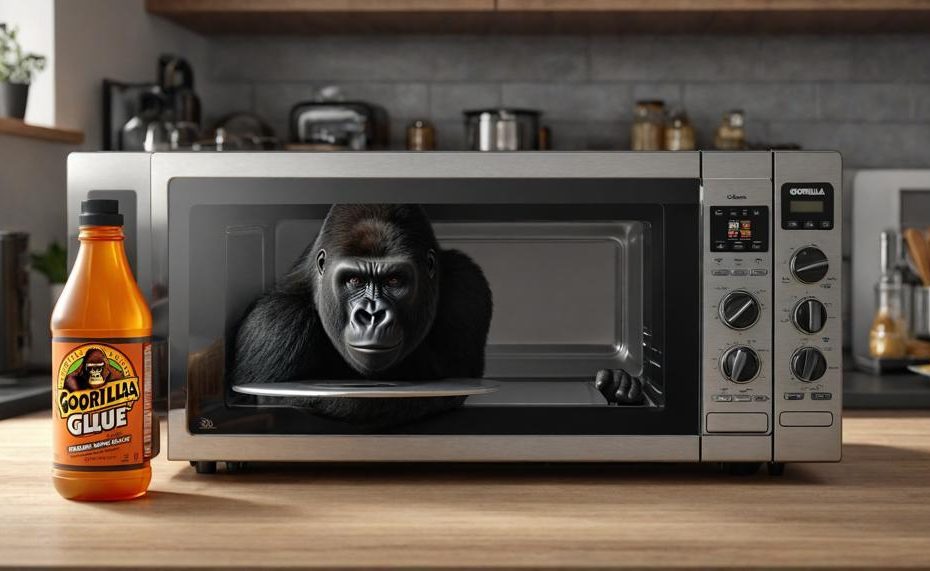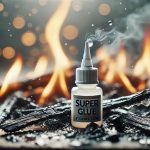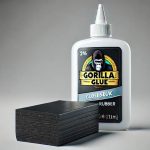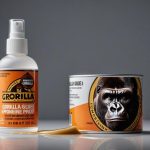No, Gorilla Glue should not be used in a microwave. While the thought of using this adhesive for a quick fix may seem tempting, it’s crucial to understand the potential risks and limitations associated with exposing it to microwaves.
Here are the key takeaways:
- Gorilla Glue is not designed for microwave use and can potentially release harmful fumes or chemicals when heated.
- The adhesive’s composition may cause it to melt, bubble, or even catch fire in the microwave, posing a safety hazard.
- Using Gorilla Glue in the microwave could damage the appliance or the item you’re trying to repair.
Exposing Gorilla Glue to microwaves can be unpredictable and dangerous. Instead of risking your safety or costly repairs, it’s best to explore alternative solutions or consult a professional for your specific needs. A moment of curiosity is not worth compromising your well-being or property.
Table of Contents
What is Gorilla Glue?
| Gorilla Glue | Other Glues |
|
|
| Gorilla Glue stands out due to its unique polyurethane composition, incredible holding power, versatility in bonding different materials, waterproof and temperature-resistant properties, and ability to expand while curing. Unlike traditional glues, it forms an exceptionally strong bond that can withstand harsh conditions, making it ideal for DIY projects, repairs, and outdoor applications. However, its longer curing time and potential for messiness if not used carefully are factors to consider. | |
Gorilla Glue is a revolutionary polyurethane-based adhesive that has taken the world by storm since its inception in 199This unique glue stands apart from traditional adhesives like white glue or school glue due to its unparalleled strength, versatility, and durability.
The secret behind Gorilla Glue’s incredible holding power lies in its chemical composition. As a polyurethane adhesive, it undergoes a chemical reaction when exposed to moisture, forming an incredibly strong bond that can withstand extreme heat, cold, and even water immersion.
Why Should You Not Use Gorilla Glue in the Microwave?
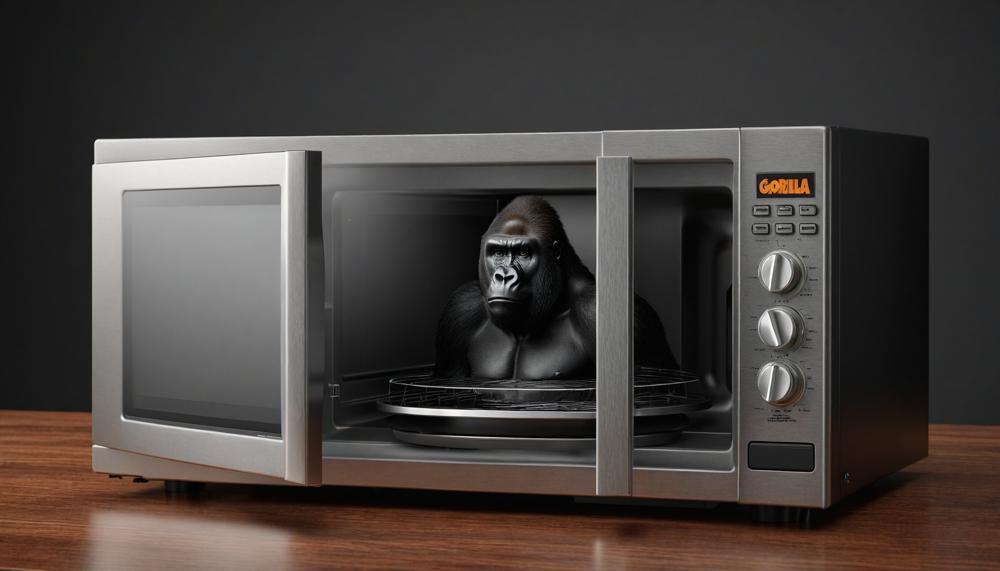
| Why You Should Not Use Gorilla Glue in the Microwave | ||
| Potential Dangers | Reasons | Recommendations |
|
|
|
The polyurethane composition of Gorilla Glue, while remarkably strong and versatile, is not designed to withstand the high temperatures and conditions within a microwave oven. Heating Gorilla Glue can potentially release flammable solvents, creating a fire hazard and emitting toxic fumes that are harmful to inhale. Additionally, the intense heat may cause the glue to break down, leading to ineffective bonding and potential damage to the microwave itself.
While there are conflicting opinions on whether certain Gorilla Glue products may be safe for limited microwave exposure, the potential risks outweigh any benefits. It is crucial to prioritize safety and follow the manufacturer’s guidelines, which do not recommend using Gorilla Glue in the microwave.
The Dangers of Using Gorilla Glue in a Microwave
Using Gorilla Glue in a microwave poses significant risks and should be strictly avoided. Here are the primary dangers:
Toxic Fume Emission
When heated, Gorilla Glue releases noxious fumes containing volatile organic compounds (VOCs) and isocyanates, which can cause respiratory issues, nausea, dizziness, and even long-term health problems if inhaled.
Fire Hazard
Gorilla Glue contains flammable solvents that can ignite when exposed to the high temperatures inside a microwave, potentially leading to fires or explosions.
Microwave Damage
The metallic components and adhesive properties of Gorilla Glue can cause arcing, sparking, and damage to the microwave’s interior, potentially rendering it inoperable or unsafe for future use.
Gorilla Glue is designed for construction and repair purposes, not for use with food or in appliances meant for cooking. Its composition and properties make it an unsuitable and hazardous choice for microwave applications.
Alternatives to Gorilla Glue for High-Temperature Environments
| Alternative Adhesive | Description | Key Features |
| Superglue (Cyanoacrylate) | A fast-bonding adhesive that forms a strong, heat-resistant bond. | – Microwave-safe – Temperature-resistant – Moisture-resistant – Suitable for various materials |
| Epoxy Glue | A two-part adhesive that cures into a tough, heat-resistant bond. | – High-temperature resistance – Waterproof – Excellent strength – Suitable for ceramics, metals, and plastics |
| Tube Stik ‘n Seal Indoor Adhesive | A silicone-based adhesive designed for high-temperature applications. | – Withstands temperatures up to 500°F (260°C) – Food-safe when cured – Waterproof and flexible – Suitable for ceramics, glass, and metals |
When using adhesives in a microwave, it’s crucial to choose products specifically designed for high-temperature environments and food-safe applications.
How to Choose the Right Adhesive for Your Project
When selecting an adhesive for a specific project, such as using Gorilla Glue in a microwave, several crucial factors must be meticulously evaluated. Here’s a comprehensive overview:
| Factor | Description | Importance |
| Intended Application | Determine the surfaces, materials, and environment where the adhesive will be used. For a microwave, consider the internal components and potential exposure to heat and moisture. | Ensures compatibility and suitability for the specific project. |
| Adhesive Chemistry | Understand the chemical composition of the adhesive, such as epoxy, cyanoacrylate, or polyurethane. Different chemistries have varying properties and limitations. | Helps identify potential risks, safety concerns, and performance characteristics. |
| Heat Resistance | Assess the adhesive’s ability to withstand high temperatures without degrading or emitting harmful fumes. Microwaves generate substantial heat. | Crucial for ensuring safety and preventing potential hazards or damage. |
| Manufacturer Guidelines | Thoroughly review the manufacturer’s instructions, warnings, and recommendations for the specific adhesive product. | Provides authoritative guidance on safe and proper usage. |
| Safety Precautions | Consider potential risks, such as toxicity, flammability, or fume emissions. Consult safety data sheets and follow appropriate handling procedures. | Safeguards user health and prevents accidents or environmental harm. |
| Curing and Drying Time | Evaluate the time required for the adhesive to fully cure or dry, as well as any temperature or humidity requirements during this process. | Ensures proper bonding and avoids potential issues caused by incomplete curing. |
It’s crucial to prioritize safety and thoroughly research the suitability of any adhesive for unconventional applications.
Tips for Safely Working with Adhesives
When working with adhesives, especially if they may be used in a microwave, it is crucial to prioritize safety and exercise caution. Here are some essential safety precautions to consider:
| Precaution | Description |
| Read Instructions | Thoroughly read and follow the manufacturer’s instructions for safe handling, usage, and disposal of the adhesive product. |
| Proper Ventilation | Ensure adequate ventilation in the work area to prevent inhaling harmful fumes or vapors released by the adhesive. |
| Personal Protective Equipment | Wear appropriate personal protective equipment (PPE) such as gloves, goggles, and a respirator to avoid skin and eye contact, as well as inhalation of fumes. |
| Avoid Heat Sources | Keep adhesives away from heat sources, including microwaves, as they can release toxic vapors when heated, posing potential health risks. |
| Clean Up Promptly | In case of spills or accidents, clean up promptly and dispose of any contaminated materials properly, following the manufacturer’s guidelines. |
| Hygiene Practices | Avoid eating, drinking, or smoking while working with adhesives, and wash your hands thoroughly after handling these products. |
It is crucial to consult the product manufacturer or seek professional advice if you are unsure about the safety of using an adhesive in a microwave or for any unconventional applications. Prioritizing safety and following proper precautions can help prevent potential health hazards and accidents when working with adhesives.
Conclusion
In a nutshell, using Gorilla Glue in a microwave is an absolute no-go. This powerful adhesive, designed for construction and repair purposes, poses severe risks when exposed to the intense heat and conditions within a microwave oven. Imagine the potential hazards: toxic fumes billowing, flames erupting, and your trusty microwave reduced to a smoldering heap. It’s a scenario straight out of a DIY disaster movie.
The polyurethane composition that gives Gorilla Glue its unparalleled strength also makes it a ticking time bomb in a microwave. The high temperatures can cause the glue to release volatile compounds, creating a noxious cloud that could leave you gasping for air. And let’s not forget the fire hazard – those flammable solvents could ignite, turning your kitchen into a scene from an action flick.
So, instead of risking your safety and your appliance’s well-being, explore alternative adhesives designed for high-temperature environments.

